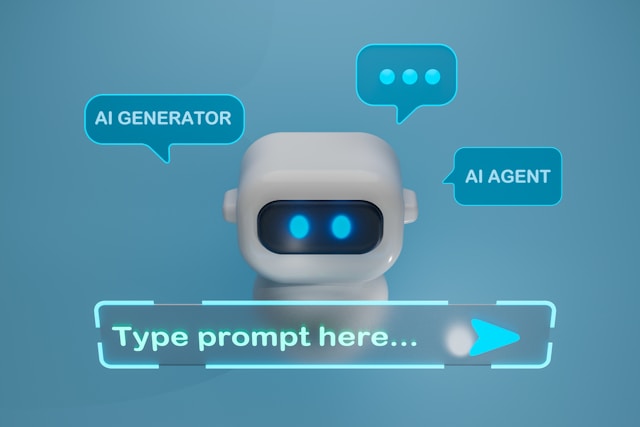Automation of customer segmentation using artificial intelligence (AI) is a revolutionary approach to audience management that eliminates tedious, manual market slicing into simple demographic groups. Thanks to advanced machine learning algorithms, it is possible to extract micro-segments based on hundreds of behavioral indicators, resulting in more precise, personalized marketing campaigns. Organizations gain not only time and resource savings but also higher effectiveness of their efforts, as they communicate with audiences at moments of genuine interest. In the rest of this article, we will explain step by step how to collect and process data, which technologies to apply, and how to monitor and optimize the effects of automated segmentation.

Table of Contents
Introduction to AI-Powered Segmentation Automation
AI-based segmentation automation goes beyond the traditional approach, in which a marketer defines groups according to predetermined criteria such as age, gender or region. Instead, machine learning–based systems analyze real customer behavior patterns—visit frequency, purchase paths, responses to email campaigns or social media activity—to detect naturally occurring user clusters. Automation ensures that segments update in real time: when a user takes a new action, the algorithm revises their membership, adjusting offers and communication to changed preferences. This way, the marketer always works with the freshest data, which is crucial in the dynamic online environment where user behaviors can shift in a fraction of a second.
Another advantage of AI is the ability to detect hidden features impossible to capture with traditional analysis. Thanks to deep learning—i.e., deep neural networks—models can combine hundreds of parameters, from time of site visit and session length to predictive models of conversion likelihood. This allows the creation of segments based on customer “intent”: someone who repeatedly browses specific product categories is placed in a “high-interest” segment. As a result, advertising content and offers are sent only to those users with a real chance of purchase, increasing campaign ROI.
Implementing automated segmentation, however, requires a change in organizational thinking: marketing is no longer a series of separate, one-off actions, but a continuous, iterative process of data analysis and experimentation. Building a data infrastructure (data warehouse) and providing it in real time to AI engines becomes key. Equally important is ensuring algorithmic transparency—marketers must understand why a given user ended up in a particular cluster in order to effectively tailor communication strategies. By combining industry knowledge with AI’s analytics capabilities, segmentation becomes a flexible, self-improving process that constantly optimizes marketing outcomes.
Data Collection and Preparation
For AI to work effectively, it is necessary to collect a wide spectrum of customer data from various sources: CRM, e-commerce platforms, web analytics systems (e.g., Google Analytics), mobile applications and social channels. Only a comprehensive view of user behavior allows algorithms to uncover nuances, such as seasonal spikes in product interest or differences in interaction patterns depending on the device.
Raw data from multiple systems usually require preliminary processing: standardizing formats, eliminating duplicates and handling missing values (imputation). At this stage, ETL (Extract, Transform, Load) tools are used to automatically gather information, clean it and load it into a common repository. A good ETL process is fundamental because “garbage in, garbage out”—even the best AI model won’t perform well with poor-quality data.
Next comes feature engineering, i.e. creating features that describe the customer: number of visits in the last 30 days, average cart value, time since last purchase or newsletter engagement rate. In this phase, decisions are also made about scaling variables or applying transformations (e.g., logarithmic), so that the data become suitable for learning algorithms. With careful preparation, AI models can extract deep patterns from the information, leading to more accurate segments.
Machine Learning Techniques in Behavioral Segmentation
The primary group of algorithms used in automated segmentation are clustering methods. K-means, one of the most popular, divides data into a predetermined number of clusters, minimizing intra-group distance. Hierarchical methods create cluster trees, allowing exploration of different density levels among users, while DBSCAN finds clusters of arbitrary shape and identifies anomalies—customers with atypical behaviors.
In recent years, interest has grown in probabilistic models such as Gaussian Mixture Models (GMM), which assign users to segments with specified probabilities. This approach works well when segments are not clearly separated and customer behaviors overlap. It is worth comparing these with deep learning algorithms, which introduce intermediate layers to detect nontrivial patterns in multidimensional data.
Validation of results is crucial. Measures such as silhouette score, Calinski-Harabasz index or Davies-Bouldin score indicate whether segments are cohesive and distinct. In addition, visualization techniques (t-SNE, UMAP) can be used to see customer distribution on a 2D plot and verify whether the algorithm truly separated groups with different purchasing patterns. Such triangulation ensures that segmentation is not only automated but also reliable.
Integration of AI with CRM Tools and Marketing Platforms
For AI-generated segments to immediately influence communication, it is necessary to integrate models with CRM systems and marketing automation tools. This usually happens via API, which sends generated customer lists to the CRM, updating profiles in real time.
Most modern email marketing platforms (Mailchimp, Salesforce Marketing Cloud, HubSpot) offer dedicated AI connectors. After importing a segment, the marketer can build a dedicated communication path—for example, a sequence of promotional emails automatically triggered when a customer is assigned to a specific cluster. This makes personalization fully automated yet highly scalable.
Integration with advertising platforms works similarly: Google Ads, Facebook Ads, LinkedIn Ads. AI segments can be exported as audiences (Custom Audiences), allowing creation of campaigns targeted only at potential buyers with the highest conversion probability. Dynamic adjustment of ad budgets based on segment value optimizes spend and accelerates ROAS.
Dynamic Personalization of Communication Based on Segments
After building and importing segments, precise content matching is key: AI can recommend headlines, images and even individualized product offers based on analysis of similarity to customers with the highest Customer Retention Rate (CRR). Email and push notification campaigns can be created in real time, reacting to changes in user behavior—e.g., cart abandonment or browsing new inventory.
For email channels, the marketer defines automation rules: a “high-value” segment customer receives an invitation to an exclusive online event, a “neglected” segment customer gets a reminder about abandoned items. The system monitors open rates, clicks and conversions, and AI continuously optimizes send order to maximize engagement.
For display and social channels, personalization means dynamic banners showing products that match prior user preferences. With DCO (Dynamic Creative Optimization) plugins, ad systems themselves adjust creatives to segments, freeing the marketer to focus on strategy and analytics instead of manually creating hundreds of ad variants.
Implementation Challenges and Best Practices
The main challenge is ensuring consistent data quality: data must not grow stale or accumulate noise. Therefore, implementing automated validation tests that nightly verify the consistency and completeness of incoming data is recommended. This minimizes the risk of assigning customers to inappropriate groups.
Another issue is transparency—so that marketers trust AI results, use XAI (eXplainable AI) tools that show the impact of individual features on segment membership. This makes it possible to understand the model’s logic and, if necessary, introduce corrections or remove certain features from analysis.
Scalability is achieved by using cloud computing (AWS SageMaker, Google AI Platform, Azure ML), which allows dynamic allocation of compute power during training and prediction. It is also essential to implement performance monitoring: metrics of latency, API query costs and segment effectiveness indicators (CTR, CR, LTV). Only a comprehensive approach ensures that AI implementation delivers real benefits rather than becoming an expensive experiment.
Measuring Effectiveness and Optimizing AI Segmentation
After launching the system, it is worth regularly monitoring KPIs: increase in CTR in campaigns, conversion rate in the “purchase intent” segment or average cart value in the highest-potential segments. A BI dashboard (Tableau, Power BI) can present metrics in real time, enabling quick reactions.
Optimization involves cyclical model retraining—monthly or after a certain amount of new data. It is worthwhile to test new input features, experiment with different numbers of clusters and compare performance of alternative algorithms. A/B tests on segments allow choosing the most efficient solution for different marketing channels.
Effective iteration between result analysis and algorithm retraining enables the system to learn on the fly and adapt to seasonal changes or new shopping trends. Thus, AI-powered automated segmentation remains a dynamic, ever-evolving process that continually improves marketing ROI.
